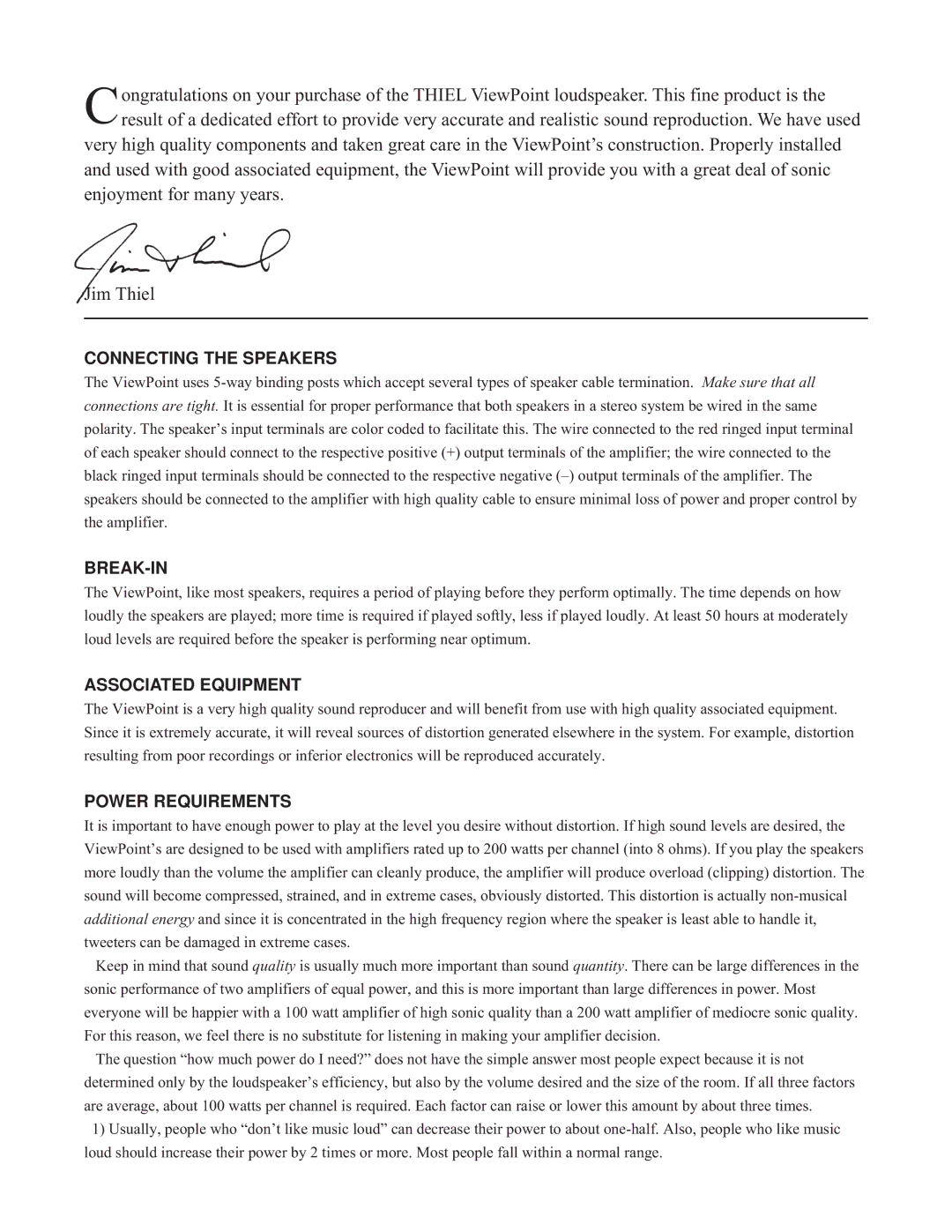
Congratulations on your purchase of the THIEL ViewPoint loudspeaker. This fine product is the result of a dedicated effort to provide very accurate and realistic sound reproduction. We have used
very high quality components and taken great care in the ViewPoint’s construction. Properly installed and used with good associated equipment, the ViewPoint will provide you with a great deal of sonic enjoyment for many years.
Jim Thiel
CONNECTING THE SPEAKERS
The ViewPoint uses
BREAK-IN
The ViewPoint, like most speakers, requires a period of playing before they perform optimally. The time depends on how loudly the speakers are played; more time is required if played softly, less if played loudly. At least 50 hours at moderately loud levels are required before the speaker is performing near optimum.
ASSOCIATED EQUIPMENT
The ViewPoint is a very high quality sound reproducer and will benefit from use with high quality associated equipment. Since it is extremely accurate, it will reveal sources of distortion generated elsewhere in the system. For example, distortion resulting from poor recordings or inferior electronics will be reproduced accurately.
POWER REQUIREMENTS
It is important to have enough power to play at the level you desire without distortion. If high sound levels are desired, the ViewPoint’s are designed to be used with amplifiers rated up to 200 watts per channel (into 8 ohms). If you play the speakers more loudly than the volume the amplifier can cleanly produce, the amplifier will produce overload (clipping) distortion. The sound will become compressed, strained, and in extreme cases, obviously distorted. This distortion is actually
Keep in mind that sound quality is usually much more important than sound quantity. There can be large differences in the sonic performance of two amplifiers of equal power, and this is more important than large differences in power. Most everyone will be happier with a 100 watt amplifier of high sonic quality than a 200 watt amplifier of mediocre sonic quality. For this reason, we feel there is no substitute for listening in making your amplifier decision.
The question “how much power do I need?” does not have the simple answer most people expect because it is not determined only by the loudspeaker’s efficiency, but also by the volume desired and the size of the room. If all three factors are average, about 100 watts per channel is required. Each factor can raise or lower this amount by about three times.
1)Usually, people who “don’t like music loud” can decrease their power to about
